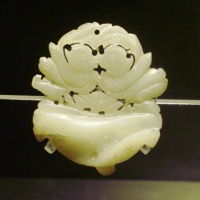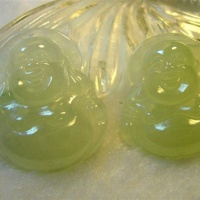- Home Page
- Fact Tours
Our sample tour itineraries of China and China travel packages are sorted by theme and available at competitive prices, you can browse what tours are right for you for your trip to China.
Popular China Tour Packages

Custom Tour Packages to China and Ask Our Experts for Free Enquiry !
- Coach Tours
- Destinations
Beijing, the capital of China. Its art treasures and universities have long made it a center of culture and art in China.
Beijing Top Attractions
Beijing City Tours
Best China Tours with Beijing
Shanghai, the cultural and economic center of East Asia. It renowned for its historical landmarks, the extensive and growing skyline.
Shanghai Top Attractions
Shanghai City Tours
Best China Tours with Shanghai
Xi'an, having held the position under several of the most important dynasties. It is the top destination to explore the facts of Chinese history.
Xi'an Top Attractions
Xi'an City Tours
Best China Tours with Xi'an
Huangshan boasts its culture, beautiful rivers, villages and mountains. It's home to 2 UNESCO World Heritage Sites and the Mecca of photographers.
Huangshan Top Attractions
Huangshan City Tours
Best China Tours with Huangshan
Sichuan is the cradle of the Shu culture, panda, mahjong, teahouse and spicy food. The province ranks first in China by number of UNESCO World Heritage Sites. It is called "the Heaven of Abundance".
Sichuan Top Attractions
Sichuan Tour Packages
Best China Tours with Sichuan
Yunnan, literally means the south of colorful clouds, due to its beautiful landscapes, mild climate and diverse ethnic cultures and traditions, is one of China's major tourist destinations.
Yunnan Top Attractions
Tibet, the nearest land to the sky, is known for its breathtaking landscape, splendid culture, art, buildings, and mysterious religions.
Tibet Top Attractions
Tibet Tour Packages
Best China Tours with Tibet
Explore the lost civilizations by riding a camel! Travel across the Gobi and the desert, and over the high mountains. Our Silk Road tours including different sections of the Silk Road in China.
Silk Road Top Attractions
Silk Road Tour Packages
Best China Tours with Silk Road
Guilin, an internationally-known historical and cultural city, has long been renowned for its unique karst scenery. Its vicinities are the paradise of hiking, caving, rafting, biking and countryside exploring.
Guilin Top Attractions
- China Facts
- China Hotels
- Travel Photos
Arts and Crafts
- Chinese Silk
- Chinese Sculpture & Carving
- Chinese Quyi
- Chinese Shadow Puppet Show
- Chinese Pearls
- Chinese Paper Cut
- Chinese Painting
- Chinese Music
- Chinese Lacquer Ware
- Chinese Wushu or Kung Fu
- Chinese Jade
- Chinese Games
- Chinese Dances
- Chinese Culture
- Chinese Ceramics
- Chinese Calligraphy
- Ancinent Chinese Bronze Vessels
- Chinese Acrobatics
Chinese Jade
A follow-up story of the famous Chinese jade 'He Shi Bi '( Mr. He and His Jade) happened in Warring States Period and then produced a popular Chinese idiom '完璧归赵'(Wan Bi Gui Zhao in Chinese Pinyin and means thing or jade returned intact to the proper owner ). It saw the history of jade as long as the Chinese civilization. China abounds widely in jade and has exploited jade for a long time. Based on rich raw materials, China has created a splendid jade carving culture.
The jade stone has been revered in China since Neolithic times. Archaeologists have found jade objects from the early Neolithic period (about 5000 BC), represented by the Hemudu culture in Zhejian Province, and from the middle and late Neolithic period, represented by the Longshan culture along the Yellow River.
Jade (Yu in Chinese pinyin) was defined as beautiful stones in Shuo Wen Jie Zi, the first Chinese dictionary. The pure white form is the most highly valued, but the stone varies in translucency and color to include many shades of green, brown and black. To the Chinese, Jade is considered as a symbol of dignity, a gift of ceremony and a mascot of blessing, fortune and longevity; its physical properties have become metaphors for the Confucian ideal of the junzi, the noble or superior man. Jade culture is very rich in China. Chinese people love the culture, meaning and humanity of jade more than the beauty of jade. A Chinese dictionary of the second century AD defines the character of yu (jade) in these terms:
Yu is the fairest of stones.
It is endowed with five virtues.
Charity is its luster, bright yet warm;
Rectitude is its translucency, revealing the color and markings within;
Wisdom is its pure and penetrating note when struck.
It is courage, for it can be broken but does not bend;
Equity is its sharp edges which injure none.
 Jade was also empowered with magical and life-giving properties; Taoist alchemists, hoping to become immortal, ate an elixir of powdered jade. Jade was a guardian against disease and evil spirits; plugs of jade were placed over the orifices of a corpse to prevent the life force from escaping. Opulent jade suits, clothing meant to prevent decomposition, have been found in Han tombs-examples can be seen in the Nanjing Museum and in the Anhui Provincial Museum in Hefei. Let us take a overview of Chinese jade culture:
Jade was also empowered with magical and life-giving properties; Taoist alchemists, hoping to become immortal, ate an elixir of powdered jade. Jade was a guardian against disease and evil spirits; plugs of jade were placed over the orifices of a corpse to prevent the life force from escaping. Opulent jade suits, clothing meant to prevent decomposition, have been found in Han tombs-examples can be seen in the Nanjing Museum and in the Anhui Provincial Museum in Hefei. Let us take a overview of Chinese jade culture:
Firstly, jade stands for beauty, grace and purity, its counterpart - the Chinese character Yu has been used in many Chinese idioms, phrases and person names to denote beautiful things or people, such as Yu Jie Bing Qing (pure and noble), Ting Ting Yu Li (fair, slim and graceful) and Yu Niang (beautiful girl).
The Chinese saying "Gold has a value; jade is invaluable." "人不磨不成才, 玉不琢不成器"(Man must be chastened into a talent just like a jade must be polished into an art article) tell that jade bears with meaning of perfection, constancy.
Jade is not only invaluable, but also the symbol of power and nobility in the ancient time. Ancient Chinese emperor's stamps all are made of rare jade and called Yu Xi (jade stamp).
Jade is always associated with happiness, health and wealth in Chinese culture. It is believed to bring luck to life. As early as the 16th century, Jade was believed to calm down nerve and keep consciousness and have healing qualities for the human stomach and kidneys.
 It is interesting to note that the Supreme Deity of Taoism has the name, Yuhuang Dadi (the Jade Emperor). So that jade articles are considered to be gifted the power of deity and often used to against evil ghost and avoid bad luck in China. Moreover, jade was also mysterious to the Chinese in the ancient time so jade wares were popular as sacrificial vessels and were often buried with the dead in order to preserve the body of the dead.
It is interesting to note that the Supreme Deity of Taoism has the name, Yuhuang Dadi (the Jade Emperor). So that jade articles are considered to be gifted the power of deity and often used to against evil ghost and avoid bad luck in China. Moreover, jade was also mysterious to the Chinese in the ancient time so jade wares were popular as sacrificial vessels and were often buried with the dead in order to preserve the body of the dead.
Jade was made into artwork, sacrificial vessel, tools, ornaments, utensils and many other items. There were ancient music instruments made out of jade, such as jade flute, yuxiao (a vertical jade flute) and jade chime. We have only touched the surface of it. There are even more about Chinese jade culture. In conclusion, jade symbolizes beauty, nobility, perfection, constancy, power, and immortality in Chinese culture as Confucius (551 BC - 479 BC) said there are 11 De (virtue) in jade.
The wise have likened jade to virtue. For them, its polish and brilliancy represent the whole of purity;
its perfect compactness and extreme hardness represent the sureness of intelligence;
its angles, which do not cut, although they seem sharp, represent justice;
the pure and prolonged sound, which it gives forth when one strikes it, represents music. Its color represents loyalty;
its interior flaws, always showing themselves through the transparency, call to mind sincerity;
its iridescent brightness represents heaven;
its admirable substance, born of mountain and of water, represents the earth.
Used alone without ornamentation it represents chastity.
The price that the entire world attaches to it represents the truth.
To support these comparisons, the Book of Verse says: "When I think of a wise man, his merits appear to be like jade."'
Now China is leading country in world Jade produce. China has a fantastic variety of jades includes Ancient Jade, Hetian Jade (in Xinjiang), Jiuquan Jade (in Gansu), Lantian Jade (in Shanxi), Dushan Jade & Mi Jade (in Henan), Xiuyan Jade (in Liaoning) and so on. Among them, Hetian Jade (in Xinjiang) and Xiuyan Jade (in Liaoning) are the most famous in China.
Questions & Comments
Home | About Us | Partnerships | Terms & Conditions | Privacy & Security | Payment Guide | Resource Links| Sitemap
Email: contact@chinafacttours.com, Tel: +86-773-3810160, Fax: (+86) 773-3810333
Copyright © 2008-2020 China Fact Tours. All rights reserved
![]()









